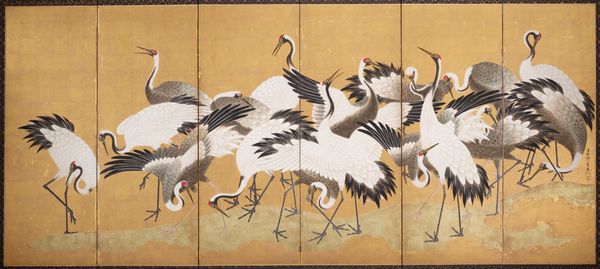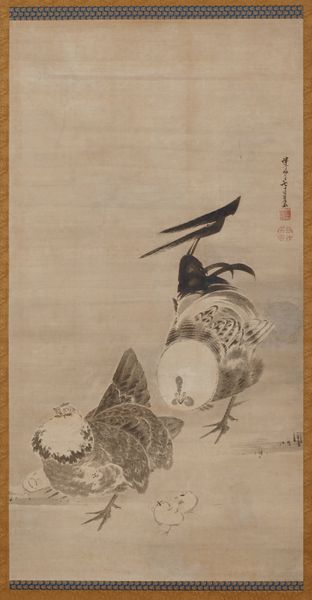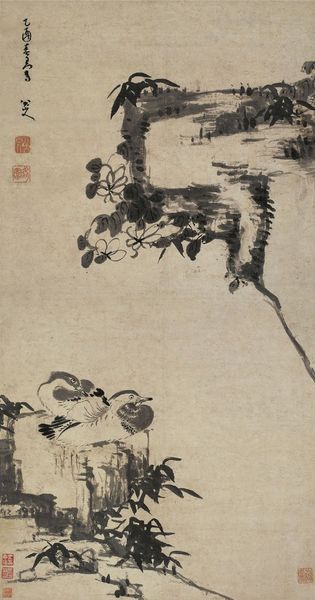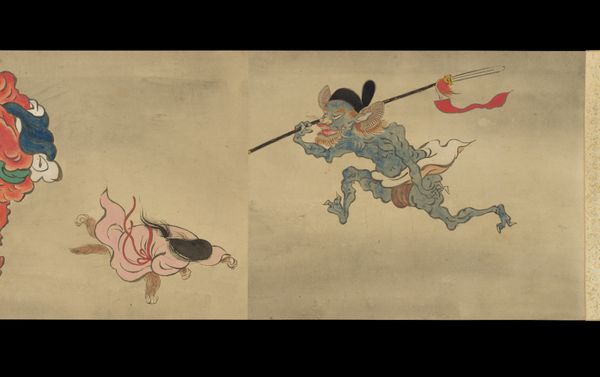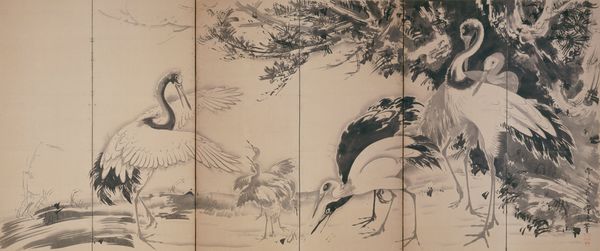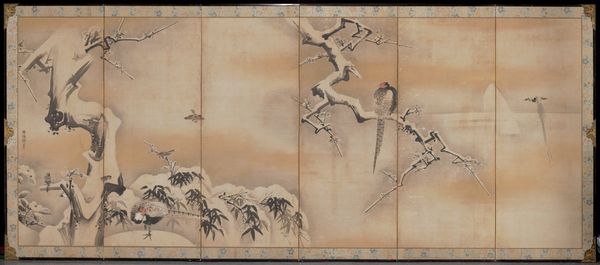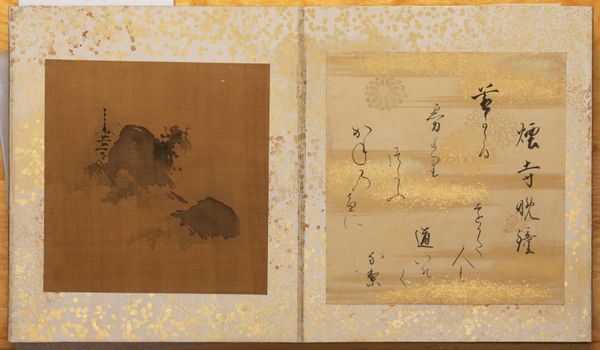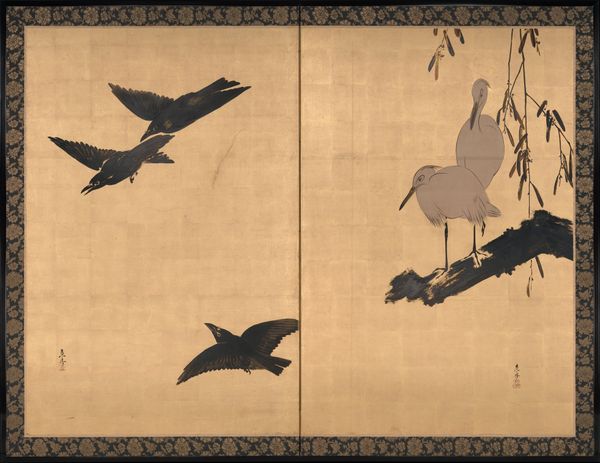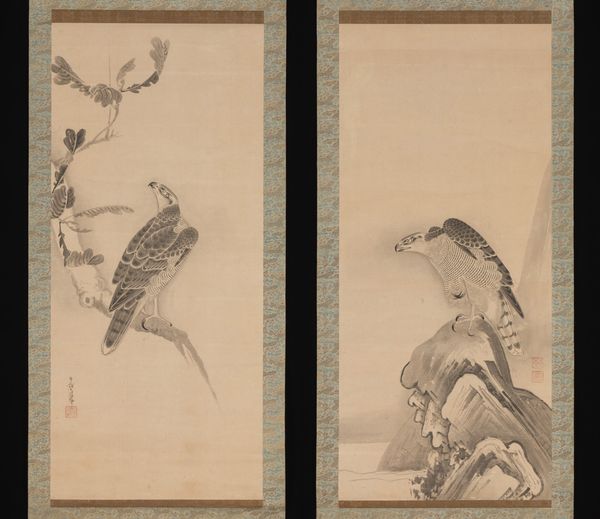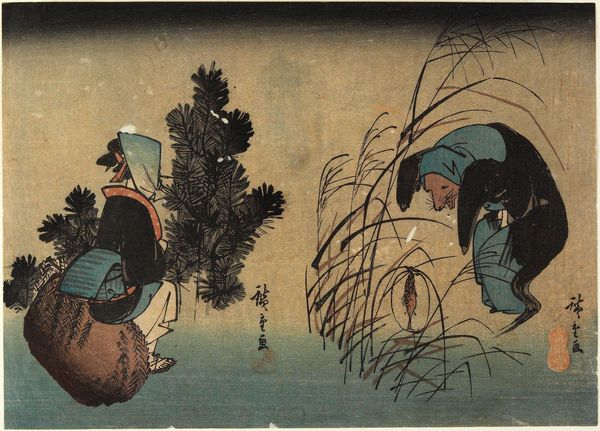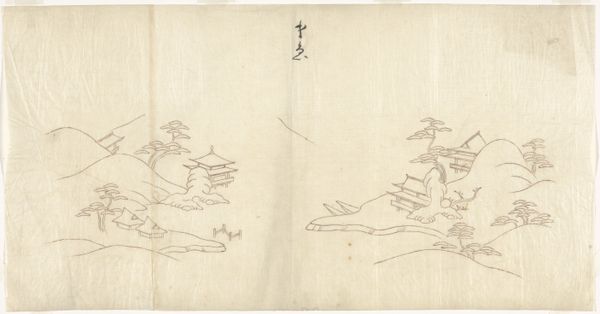![Roosters and Hens [left of a pair] by Ito Jakuchu](/_next/image?url=https%3A%2F%2Fd2w8kbdekdi1gv.cloudfront.net%2FeyJidWNrZXQiOiAiYXJ0ZXJhLWltYWdlcy1idWNrZXQiLCAia2V5IjogImFydHdvcmtzL2JhY2ZmYWNlLTYxMWQtNDA0NC04YTIyLWE0NmIxZGIxZjQ4Zi9iYWNmZmFjZS02MTFkLTQwNDQtOGEyMi1hNDZiMWRiMWY0OGZfZnVsbC5qcGciLCAiZWRpdHMiOiB7InJlc2l6ZSI6IHsid2lkdGgiOiAxOTIwLCAiaGVpZ2h0IjogMTkyMCwgImZpdCI6ICJpbnNpZGUifX19&w=3840&q=75)
drawing, paper, ink-on-paper, ink
#
drawing
#
ink drawing
#
ink painting
#
animal
#
asian-art
#
landscape
#
ukiyo-e
#
japan
#
figuration
#
paper
#
ink-on-paper
#
ink
#
line
#
realism
Dimensions: 49 3/4 × 19 1/2 in. (126.37 × 49.53 cm) (image, each panel)68 1/4 × 145 1/2 × 3/4 in. (173.36 × 369.57 × 1.91 cm) (outer frame)
Copyright: Public Domain
Editor: This is Ito Jakuchu's "Roosters and Hens," a lovely ink-on-paper drawing from around the 18th century. I'm really struck by the energy in what seems like a very simple composition. What jumps out at you when you look at it? Curator: The rooster, of course, immediately presents itself. Think about what a rooster represents across cultures – virility, dawn, vigilance. This piece, as one panel of a pair, suggests a duality, a balance. What symbolic meaning might roosters and hens possess in tandem, viewed in relation to one another? Editor: Hmm, I guess the hen would then be more about nurture and the everyday domestic. So, together, are they about a full cycle of life or some kind of balance in nature? Curator: Precisely. Note how the brushstrokes depicting the fowl vary. The rooster is rendered with sharp, decisive lines that conveys power and precision, whilst the hen features softer, rounder forms suggestive of tranquility. Ito's keen observation translates beyond mere avian depiction, touching upon universal dichotomies. Editor: I see what you mean. The composition creates a sense of both tension and harmony simultaneously. It's much deeper than just a pretty drawing of chickens. Curator: Indeed. Consider how these symbols resonate with enduring cultural narratives about gender, nature, and societal roles, and you'll start appreciating its value. How do you think a contemporary viewer would perceive these animals, removed from an 18th-century context? Editor: Maybe with a bit of irony or nostalgia? Our relationships with animals are definitely more complex now. Thank you! I'll be pondering on those dualities now.
Comments
minneapolisinstituteofart almost 2 years ago
⋮
This pair of folding screens features twelve individual compositions, each pasted onto its own panel, a format known as an oshiebari screen. Each painting shows either a rooster or a hen (look out for two chicks hidden in one picture). Overlaid brushstrokes in varied ink tones capture the details of feathers and combs. Against white paper marked with only the briefest suggestions of natural settings—cactus, bamboo, pine tree, banana plant, willow tree—the birds’ flamboyant poses and dramatic plumage stand out. Chickens were the favorite subject of Itō Jakuchū, one the best-known painters in Kyoto in the 1700s.
Join the conversation
Join millions of artists and users on Artera today and experience the ultimate creative platform.
